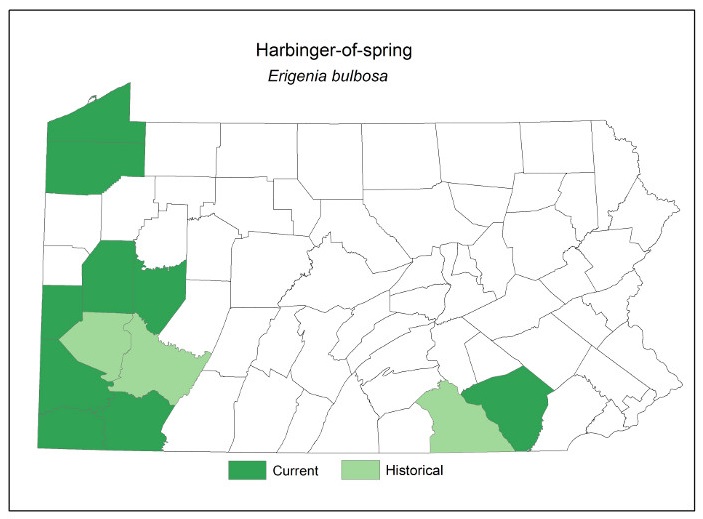Blog

#bioPGH Blog: Harbinger-of-spring
 A resource of Biophilia: Pittsburgh, #bioPGH is a weekly blog and social media series that aims to encourage both children and adults to reconnect with nature and enjoy what each of our distinctive seasons has to offer.
A resource of Biophilia: Pittsburgh, #bioPGH is a weekly blog and social media series that aims to encourage both children and adults to reconnect with nature and enjoy what each of our distinctive seasons has to offer.
Colloquially speaking, “harbingers of spring” can include a variety of seasonal events and signs that let us know warmer days are approaching. A number of early blooming flowers like skunk cabbages and daffodils have received the unofficial moniker, and in the realms of folklore and ancient tradition, sneaky fairy activity and the exchange of colorful eggs could all be harbingers of the green and whimsical season ahead. Yet there is one flower in particular that must have the spotlight when we talk about harbingers of spring, and that is the actual plant…harbinger-of-spring (Erigenia bulbosa). Though its name may be primed for misunderstanding a lá Abbott and Costello, the harbinger-of-spring does indeed bloom in Pennsylvania just in time to live up to its namesake as a seasonal herald, but its small stature and relative uncommonness make it a sight a bit tricky to spot. Let’s learn about more about this spring ephemeral!
Harbinger-of-spring is a small, early-blooming plant in the carrot and parsley family. At most, the plant may reach six inches tall, but may stay as low as two inches. Underground, though, the plant lives up to its scientific name Erigenia bulbosa, with an enlarged tuber underground that helps to store water and nutrients. Like many other members of its plant family, when the harbinger-of-spring blooms, it forms an umbel — a cluster of small flowers growing out from a center point and creating something of a disc or umbrella-shaped inflorescence. Since it blooms so early, it’s a notable nectar source for pollinators like solitary bees and flies, though its nectar sugar content isn’t quite as high as other early-bloomers.
The harbinger-of-spring can be found across the Eastern US. It used to be more widespread across Pennsylvania, but it now is restricted to two broad populations in Western Pennsylvania and East-Central Pennsylvania. A recent genetics study of Pennsylvania’s harbinger-of-spring noted several reproductively isolated populations within those respective east and west areas (see map below). This means the flowers are vulnerable to all of the risks of low genetic diversity, with a large concern being they can’t adapt quickly to a changing environment (and considering it takes a harbinger-of-spring plant 6-7 years before they bloom for the first time, we can certainly see a slow life cycle playing a role). But knowledge is power, and the goal with conservation science, like that recent study, is to help policy makers and land managers make more informed conservation decisions. So let’s hear it for helpful scientists!

Map Credit: Pennsylvania Natural Heritage Program
Well, now that we’ve learned a bit about this plant, we can keep our eyes open for its early blooms. We still have a few weeks to go before we can expect to see it in most parts of Pennsylvania, but while we wait, we can actually watch the bloom of harbinger-of-spring rolling northward via iNaturalist. Observations from as early as late January were popping up in warmer southern states like Georgia and Missouri, and throughout February, observations came in from Alabama, the Carolinas, Tennessee and Kentucky. A spring gets closer, we should see those blooms moving closer as well!
Connecting to the Outdoors Tip: Though a bit rare in Allegheny County, you can find harbinger-of-spring in Racoon Creek State Park at the Wildflower Preserve, Barking Slopes Conservation Area and Braddocks Trail Park.
Image Credits: Cover, Judy Gallagher, CC-BY-2.0; Header, Pexels
